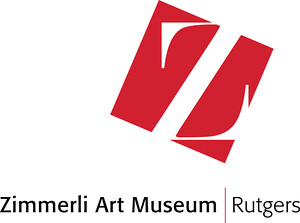Virtual Artist Talk: February 16, 2022, 7pm
Alexander Melamid has lived in the United States since 1978. In this lecture, he looks back at his career to offer “kind of a manual of how to emigrate to the country of Art. Warning: emigration is not for the faint-hearted.”
This is a rare opportunity to hear directly from an icon of Soviet Nonconformist art, who then became a vital part of the New York art scene. With longtime artistic partner Vitaly Komar, Melamid created “Sots Art,” fusing satire to the unforgiving rules of Soviet culture, creating incisive yet humorous critiques of both life in the USSR and the excesses of the Western art world in general. The Zimmerli’s Norton and Nancy Dodge Collection of Nonconformist Art from the Soviet Union includes more than 100 works by the artists.
A Q&A follows the talk. Free and open to the public. Register here to receive Zoom Link. This program is supported by the Avenir Foundation Endowment Fund. Visit the Zimmerli’s website for a full list of programs.
The Zimmerli Art Museum is one of the largest and most distinguished university-based museums in the country, and is located on the New Brunswick campus of Rutgers, The State University of New Jersey. The museum collects, preserves, researches, and exhibits world-class works of art to provide the university community and diverse regional, national, international audiences with direct experience of the visual arts. Scholarly activities make art accessible through exhibitions, publications, and educational programs.
The Zimmerli’s holdings of Russian and Soviet art are unmatched in the United States, providing a unique overview from the fourteenth century to the present day. The museum’s George Riabov Collection of Russian Art showcases Russia’s diverse artistic heritage, and includes examples of art from icons to paintings by the Peredvizhniki (Wanderers), Ballet Russes set and costume design, and works by the Avant-Garde.
The Zimmerli holds the largest collection in the world of Soviet nonconformist art, thanks to a remarkable 1991 donation from Norton and Nancy Dodge. Over 20,000 works by more than 1,000 artists reveal a culture that defied the strict, state-imposed conventions of Socialist Realism. This encyclopedic array of nonconformist art extends from about 1956 to 1991, from the beginning of Khrushchev’s cultural “thaw” to the dissolution of the Soviet Union. In addition to art made in Russia, the collection includes nonconformist art produced in the ethnically-diverse Soviet republics of Armenia, Azerbaijan, Belarus, Estonia, Georgia, Kazakhstan, Kyrgyzstan, Latvia, Lithuania, Turkmenistan, Ukraine, and Uzbekistan. A generous gift by Claude and Nina Gruen extended the Zimmerli’s Russian art holdings to the post-Soviet era, with later works by nonconformist artists as well as by new generations active in the 1990s and 2000s. Large archival holdings support scholarship in the collection.
Rutgers, The State University of New Jersey, stands among America’s highest-ranked, most diverse public research universities, with 71,000+ undergraduate and graduate students, as well as 530,000 alumni around the world. Founded in 1766, as one of only nine colonial colleges established before the American Revolution, Rutgers is the nation’s eighth-oldest institution of higher learning.


